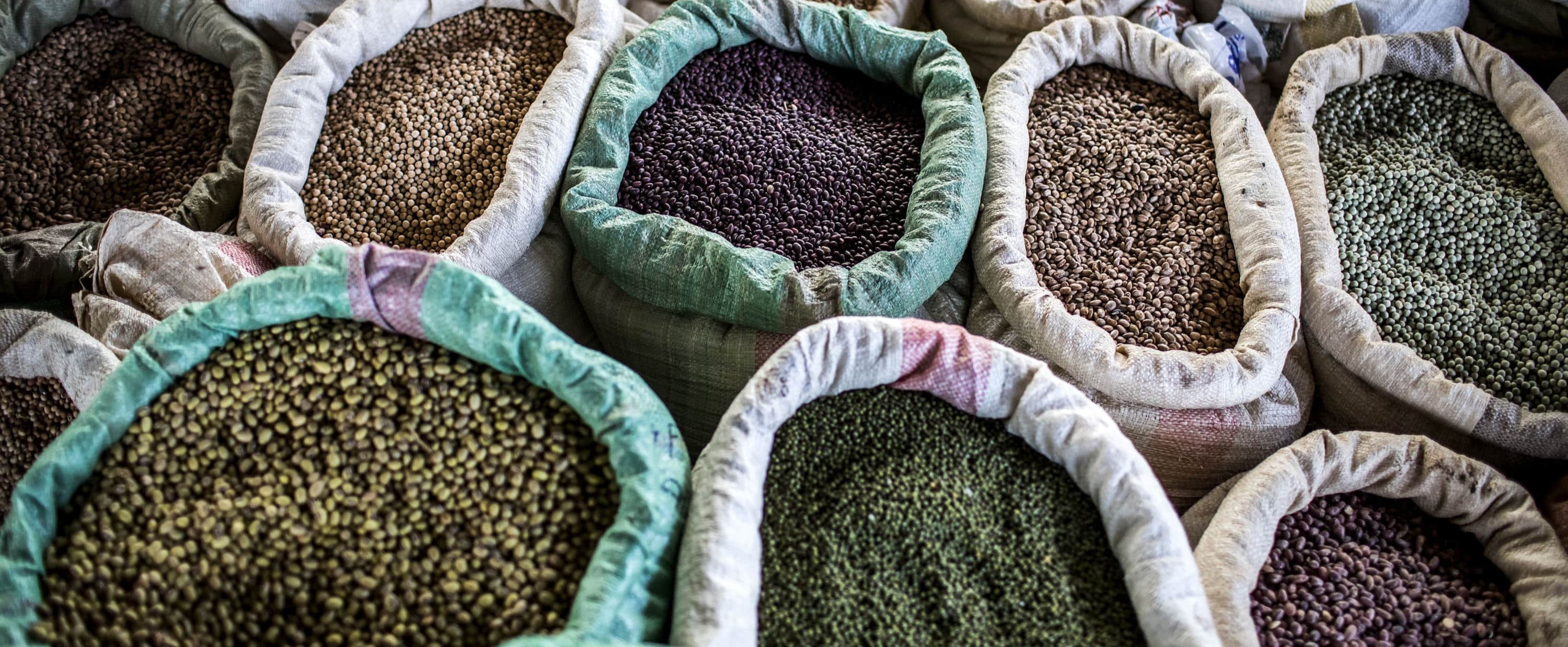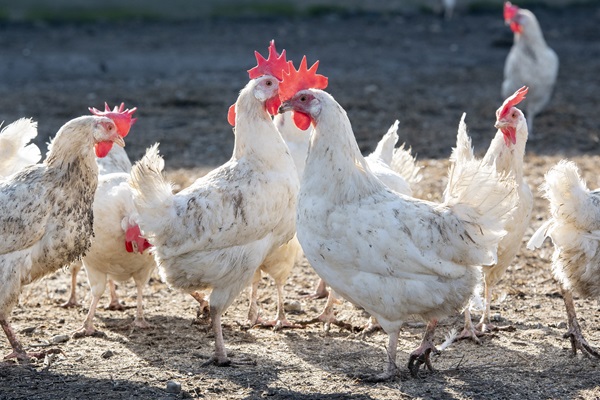Elimination of hunger and improvement in nutrition across the globe will require major transformations of agrifood systems. Innovative applications of science and technology will play significant roles in such transformations. Gene-editing technology, including CRISPR (clustered regularly interspaced short palindromic repeats), represents a recent advance in genetics and its application to plant and animal breeding, and is set to contribute to improvements in various aspects of agricultural production.

Grains and pulses for sale in Meru market, Kenya. © FAO/Luis Tato
The science- and evidence-based FAO Issue Paper on gene editing and agrifood systems discusses the most important aspects of gene editing: the consequences for human hunger, human health, food safety, effects on the environment, animal welfare, socioeconomic impact and distribution of benefits. Intrinsic ethical concerns, issues of governance and regulation and the roles of the public and private sectors are summarized.
Gene editing allows modification of a genome more precisely than other forms of breeding. It can reduce the breeding time needed to produce a new variety or breed and reduce research and development costs. Gene editing represents an opportunity to address a range of difficult problems, including those associated with developing durable resistances to diseases, pests and abiotic stresses. It also offers new options for developing adapted traits in neglected and underutilized crop species. Gene editing can play a role in enhancing nutritional composition of crops and improving efficiency of feed conversion and reduction in methane and nitrogen emissions in livestock. Applications of gene editing are discussed in the paper in terms of their merits and demerits for various traits introduced into crops, livestock and fish.
Despite gene editing’s potential to improve food security, nutrition and environmental sustainability, safety issues must be addressed. Identification of potential problems associated with new products is important to ensure their secure and sustainable use and satisfy consumers. Regulation must be enacted to obviate unpredicted outcomes.
The economic impact of gene editing will be determined by availability of products, particularly seeds, to small-scale producers, especially in low- and middle-income countries. Social and ethical concerns, including public trust in scientists and developers will be important, as will considerations of risk and benefit distributions, and questions about naturalness and differing cultural values. Intrinsic ethical concerns and animal welfare will also have to be considered when developing and deploying gene-edited products.

Free range leghorn hens, Savigliano Italy. © FAO/Victor Sokolowicz

Fish swim in a protected marine environment off the Maltese coast. © FAO/Kurt Arrigo
Governance aspects of gene-edited products include sanitary and phytosanitary regulations. Governments must focus on taking a well thought out regulatory approach that attempts international harmonization to the extent possible. To date a variety of approaches is taken.
Gene editing research occurs in the private and public sectors, but their objectives and incentives often diverge. Issues of ownership of technologies and products, including those from gene editing, are seldom straightforward and intellectual property considerations are important. However, collaboration between the two sectors is possible and those for whom gene-editing technologies and products offer a solution to current constraints should be able to afford and access them.
Gene editing is not a stand-alone technology and is not the only solution for the problems currently faced by agrifood systems, and as the Nobel Laureate Jennifer Doudna emphasized, “One risk that is often overlooked is the real possibility that some of the advances we make in genome editing will benefit a small fraction of society. With new technologies this is often the case at first, so we have to consciously work from the start to make new cures and agricultural tools that are accessible and affordable.”
Previous transformations of agrifood systems have not been easy, and not without trade-offs, but innovative applications of science and technology have resulted in substantial improvements in productivity. Gene editing may represent a step towards the transformation of agrifood systems so that they can withstand better current and future pressures.
It is important that interventions involving application of gene editing result in developments that are appropriate and sustainable. FAO is ready to play a leading role in this important area of scientific and technological advance by providing a neutral forum for constructive dialogue and exchange of knowledge and by promoting discussion on the applications of gene editing to agrifood systems.
Learn more

Publication
Issue Paper: Gene editing and agrifood systems
This science- and evidence-based Issue Paper on gene editing and agrifood systems presents a balanced discussion of the most pertinent aspects of gene editing, including the consequences for human hunger, human health, food safety, effects on the environment, animal welfare, socioeconomic impact and distribution of benefits. Intrinsic ethical concerns and issues of governance and regulation are addressed, and the roles of the public and private sectors, alone and in partnership, are summarized. Various scenarios are also presented for how gene editing might be used in the future to help transform agrifood systems.
